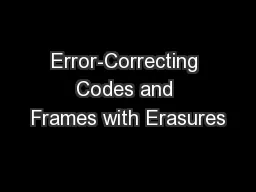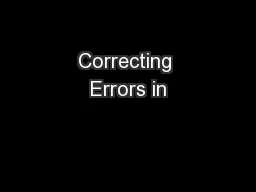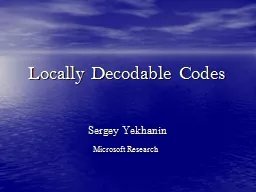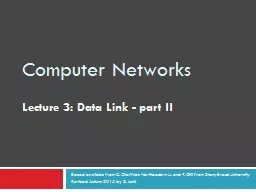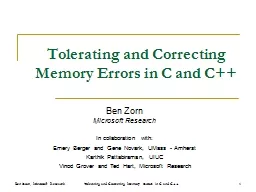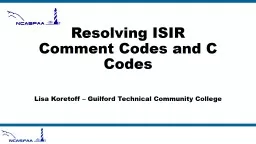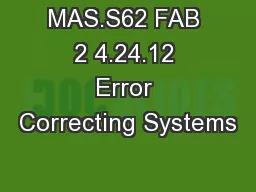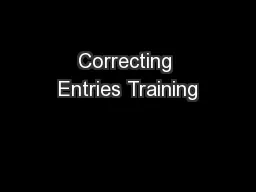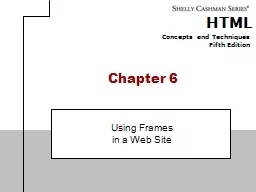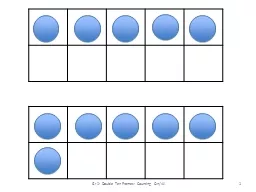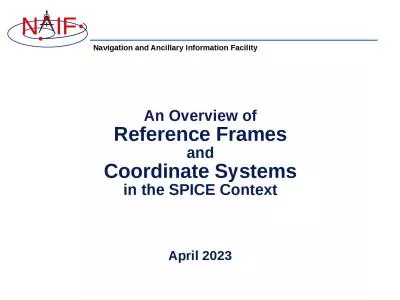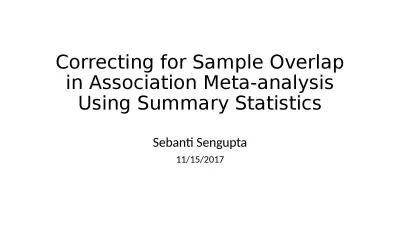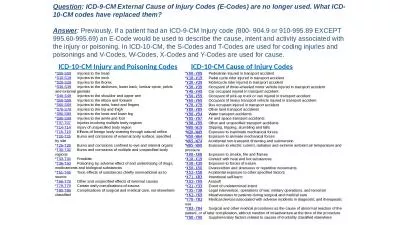PPT-Error-Correcting Codes and Frames with Erasures
Author : jane-oiler | Published Date : 2018-10-06
Amanda S Amy Izzie Katie SPWM July 30 th 2011 What it is An errorcorrecting code is an algorithm for expressing a sequence of numbers Any errors which are introduced
Presentation Embed Code
Download Presentation
Download Presentation The PPT/PDF document "Error-Correcting Codes and Frames with E..." is the property of its rightful owner. Permission is granted to download and print the materials on this website for personal, non-commercial use only, and to display it on your personal computer provided you do not modify the materials and that you retain all copyright notices contained in the materials. By downloading content from our website, you accept the terms of this agreement.
Error-Correcting Codes and Frames with Erasures: Transcript
Download Rules Of Document
"Error-Correcting Codes and Frames with Erasures"The content belongs to its owner. You may download and print it for personal use, without modification, and keep all copyright notices. By downloading, you agree to these terms.
Related Documents

